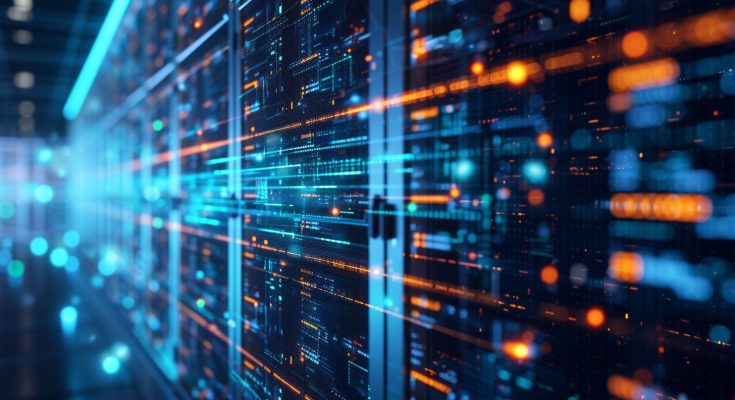Windows 10 is a robust operating system known for its performance and versatility. However, over time, you may notice your computer slowing down due to various reasons such as accumulated temporary files, background processes, or outdated system settings. This guide provides practical steps and tips to optimize and speed up your computer running Windows 10, enhancing its overall performance and responsiveness.
- Check for System Requirements
Before diving into optimization, ensure your computer meets the recommended system requirements for Windows 10:
- Processor: 1GHz or faster processor or SoC (System on a Chip)
- RAM: 1GB for 32-bit or 2GB for 64-bit
- Storage: 32GB or larger hard disk space
- Graphics card: DirectX 9 or later with WDDM 1.0 driver
- Display: 800×600 resolution or higher
- Update Windows 10
Keeping your operating system is crucial for security, stability, and performance improvements. Windows updates often include bug fixes and optimizations to help speed up your computer. Here’s how to check for updates:
- Step 1: Open Settings by pressing the Windows key + I.
- Step 2: Go to Update & Security > Windows Update.
- Step 3: Click on Check for updates and install any available updates.
- Manage Startup Programs
Many applications automatically start when you boot up your computer, slowing the startup process. You can manage these startup programs to improve boot time:
- Step 1: Right-click on the taskbar and select Task Manager.
- Step 2: Go to the Startup tab.
- Step 3: Disable unnecessary startup programs by selecting them and clicking Disable.
- Disk Cleanup
Over time, your computer accumulates temporary files and other unnecessary data that can take up valuable disk space and slow down performance. Use Disk Cleanup to remove these files:
- Step 1: Type Disk Cleanup in the Windows search bar and select Disk Cleanup from the results.
- Step 2: Select the drive you want to clean (usually C: drive) and click OK.
- Step 3: Check the boxes for the types of files you want to delete (e.g., Temporary files, Recycle Bin) and click OK > Delete Files.
- Disable Special Effects and Animations
- Step 1: Open Settings (Windows key + I) and go to System > About.
- Step 2: Click on Advanced System Settings on the left-hand side.
- Step 3: Under the Performance section, click Settings.
- Step 4: Choose Adjust for best performance or manually uncheck visual effects you can live without. Click Apply and OK.
- Optimize Power Settings
Windows 10 includes power plans that control how your computer uses power. Choosing the right power plan can impact system performance:
- Step 1: Open Settings (Windows key + I) and go to System > Power & sleep.
- Step 2: Click on Additional power settings.
- Step 3: Select High performance as your preferred plan for maximum performance.
- Update Device Drivers
Outdated or incompatible device drivers can cause performance issues. It’s essential to keep your drivers up to date:
- Step 1: Right-click on the Start button and select Device Manager.
- Step 2: Expand categories (e.g., Display adapters, Network adapters) and right-click on a device.
- Step 3: Select Update driver and follow the on-screen instructions to search for updated drivers automatically.
- Disable Background Apps
Apps running in the background can consume system resources and slow down your computer. Disable unnecessary background apps to improve performance:
- Step 1: Open Settings (Windows key + I) and go to Privacy > Background apps.
- Step 2: Toggle off the apps you don’t want running in the background.
- Defragment and Optimize Drives

Regularly defragmenting your hard drive (if not using SSD) can improve performance by rearranging fragmented data:
- Step 1: Type Defragment and Optimize Drives in the Windows search bar and select the program from the results.
- Step 2: Select the drive you want to optimize and click Optimize.
- Increase Virtual Memory (Pagefile)
Virtual memory, or pagefile, is a portion of your hard drive that Windows uses as if it were RAM. Increasing virtual memory can help improve system performance:
- Step 1: Type Control Panel in the Windows search bar and open it.
- Step 2: Go to System and Security > System > Advanced system settings.
- Step 3: Under the Performance section, click Settings > Advanced tab > Change under Virtual memory.
- Step 4: Uncheck Automatically manage paging file size for all drives. Select the drive with Windows installed, choose Custom size, and set Initial size and Maximum size based on your system’s recommendations (usually 1.5 times your RAM size).
- Disable Search Indexing
Windows 10 indexes files to speed up searches. If you don’t use Windows search often, disabling indexing can save system resources:
- Step 1: Type Services in the Windows search bar and open it.
- Step 2: Scroll down and double-click on Windows Search.
- Step 3: In the Startup type dropdown, select Disabled. Click Apply and OK.
- Clean up Browser Extensions and Plugins
Browser extensions and plugins can slow down browsing and overall system performance. Remove unnecessary or outdated extensions:
- Step 1: Open your browser (e.g., Chrome, Firefox) and go to the extensions or plugin settings.
- Step 2: Disable or remove extensions you no longer use or need.
- Scan for Malware and Viruses
Malware and viruses can significantly impact computer performance. Use Windows Security (Windows Defender) or third-party antivirus software to perform a full system scan:
- Step 1: Type Windows Security in the Windows search bar and open it.
- Step 2: Go to Virus & Threat Protection> Quick scan or Full scan.
- Adjust Virtual Desktop Settings
Windows 10 allows for multiple virtual desktops, which can consume resources if not managed properly:
- Step 1: Open Task View by pressing the Windows key + Tab.
- Step 2: Right-click on a virtual desktop thumbnail and select Close to free up resources.
- Consider Hardware Upgrades
If your computer still runs slow after optimizing software settings, consider upgrading hardware components like RAM or switching to an SSD for improved performance.
Conclusion
Optimizing your Windows 10 computer for speed involves a combination of software tweaks, maintenance tasks, and occasionally hardware upgrades. By following the steps outlined in this guide, you can significantly improve your computer’s performance, responsiveness, and overall user experience. Regularly maintaining your system and staying vigilant against performance bottlenecks will ensure your Windows 10 PC continues to run smoothly for years to come.
Implement these optimizations gradually, assessing the impact on performance after each step. Tailor settings and adjustments based on your specific usage patterns and needs to achieve the best results from your Windows 10 computer.
FAQs:
lude performance improvements and bug fixes. Ensure your system is up to date by checking in Settings > Update & Security > Windows Update.
4. Should I disable startup programs to speed up Windows 10? Yes, unnecessary startup programs can slow down boot times. Use Task Manager to manage startup items and disable those you don’t need.
5. How do I clean up disk space on Windows 10? Use Disk Cleanup to delete temporary files and other clutter. Search for Disk Cleanup in the Start menu, select the drive, and click OK after checking the boxes for files to delete.
6. Can adjusting power settings improve computer speed? Yes, setting power options to High performance (found in Settings > System > Power & sleep > Additional power settings) can enhance system responsiveness.
7. Does upgrading RAM speed up a Windows 10 computer? Yes, adding more RAM can improve multitasking performance, especially if you often use memory-intensive applications or multiple browser tabs.
8. How often should I restart my Windows 10 computer? Restarting periodically helps refresh system resources and clear temporary files from memory, potentially improving overall performance.
9. Should I disable Windows visual effects to speed up my computer? Disabling unnecessary visual effects (found in Advanced system settings > Performance settings) can free up system resources for better performance.
10. Can malware or viruses cause a slow Windows 10 computer? Yes, malware and viruses can significantly impact performance. Run a full system scan using Windows Security or a reputable antivirus program to detect and remove threats.

